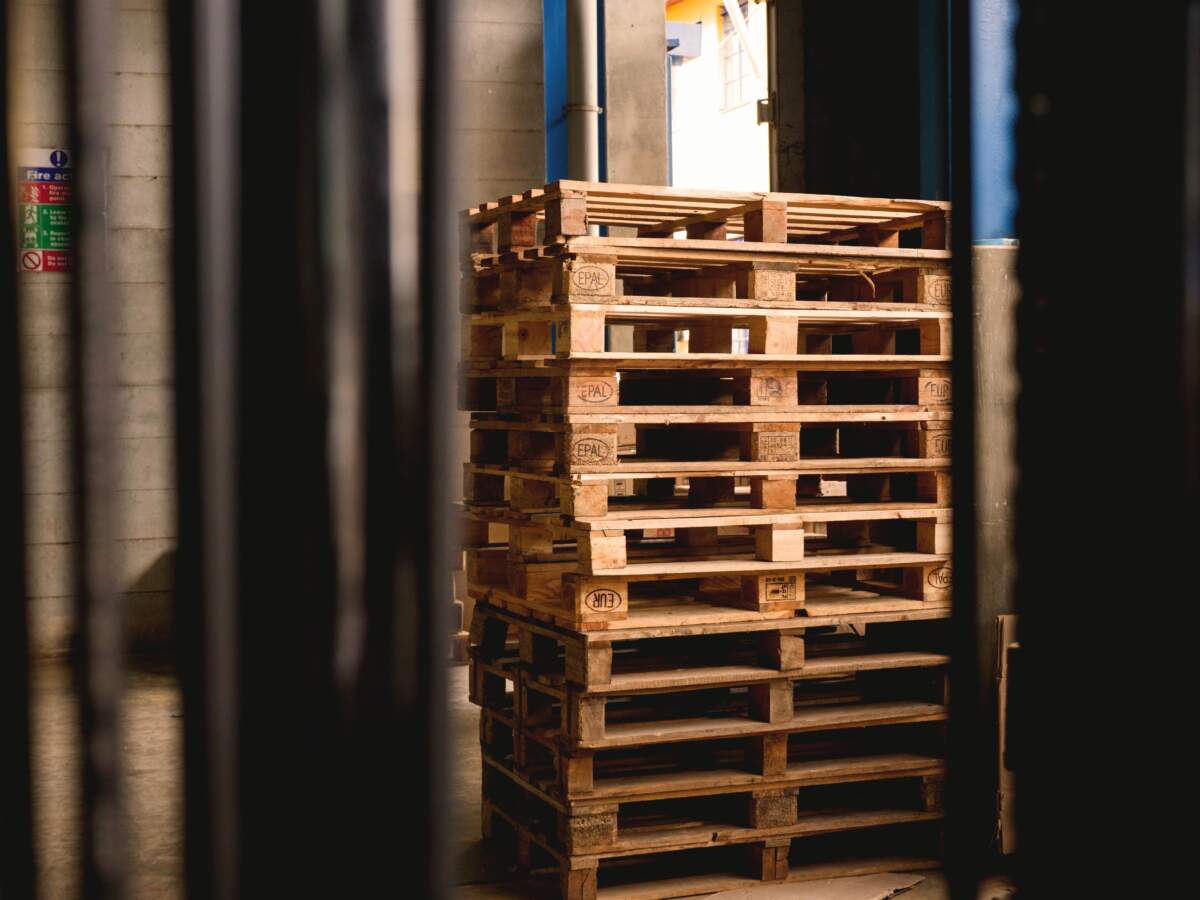
They’re an unavoidable aspect of shipping, but you may be wondering: how do pallets work? The ubiquity of pallets is owed to the benefits they provide during shipping, but confusion can be caused by their fluctuating prices, as well as the process of procuring them. Let’s take a closer look at how pallets work.
What are the Benefits of Shipping with Pallets?
It’s virtually impossible to ship without pallets, and for good reason. Pallets protect goods from damage or loss during the shipping process. They also allow for various goods to be stacked in one unit, simplifying the tracking and handling process.
Pallets work well with forklifts and other handling equipment, allowing for faster loading and unloading. They also stack well, creating storage efficiencies, both on ships and for those who work in warehouses.
The vast majority of pallets currently in service are wooden, although plastic pallets are also used. Wooden pallet manufacturers cite their recyclability and general environmental benefits over plastic pallets, while plastic proponents note durability and cleanliness as advantages.
How are Pallets Sourced?
General exchange non-rental pallets, AKA white pallets, can be purchased by those doing the shipping. Procuring these pallets is a service that Canadian Alliance offers our clients.
Alternately, there are several popular brands of pallets that can be rented directly by customers. CHEP pallets can be identified by blue paint, while PECO pallets are marked in red. While these pallets are not sourced by Canadian Alliance, we do provide assistance in the form of information. Each day we monitor stocks and alert our customers in the case of low inventory.
While 48 inches X 40 inches is the standard pallet size used by our clients, other dimensions are available.
“Clients who are shipping goods that aren’t accommodated by regular pallets, such as large glass greenhouse panels, for example, will require a different size of pallet,” says Canadian Alliance Operations Manager Jinwan Kim. “These will need to be purchased directly from individual sponsors, and will be subject to additional handling fees.”
How Much Do Pallets Cost?
The price of purchasing a pallet was historically in the $10 range, but this rose slightly to $12 in 2020, during the onset of the pandemic.
The following year a confluence of events caused prices to rise dramatically to $18 or more. A lumber shortage resulted in a spike in the price of the main raw material used in the assembly of pallets. Meanwhile, the same logistics problems that plagued other aspects of the supply chain made it more difficult to ensure that the pallets themselves could be made available when and where they were needed. These events coincided with a rise in e-commerce activity, further straining pallet supply and demand dynamics. Shippers were generally willing to pay the inflated prices, but many were unable to source pallets at all as a result of the shortage.
Availability has since stabilized and the price of lumber has decreased from its peak, but the inflated cost of pallets remains in place. Pallet manufacturers attribute the sustained prices to higher costs of labour, freight, and other materials, such as nails. For the benefit of our customers, Canadian Alliance maintains an ongoing index tracking the current white board pallet market price.
Of course, pallets are just one aspect of shipping costs, which have risen across the board in recent years. Global logistics problems caused by the pandemic and other events are certainly contributing factors to this, but allegations of price gouging have been levelled towards international shipping giants. Whatever the reason, higher shipping costs have become entrenched.
“In the past, vendors were willing to cover the cost of transportation if you ordered a certain amount,” says Canadian Alliance Analyst Matt Yu. “Nowadays transportation is always additional, regardless of volume.”
Unfortunately there’s little that can be done to alleviate this expense.
“When we build pallets, customers want them to be able to accommodate higher loads, regardless of weight, in order to save money per position,” says Kim, “but racking heights restrict our ability to go higher.”
Canadian Alliance is a third party logistics company that offers a broad range of warehousing, distribution, transportation, and inventory management solutions to our clients. We strive to be a true logistics partner, utilizing both our experience and data analysis to help our clients make decisions that work for their unique needs.
Contact Canadian Alliance today and let us help you build solutions that meet your logistics requirements.
Cited Sources
Personal Communications with Jinwan Kim and Matt Yu
